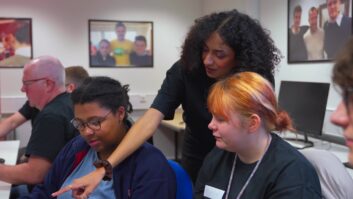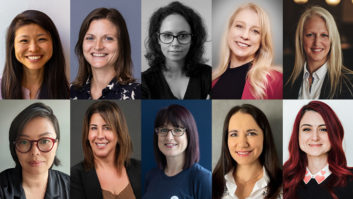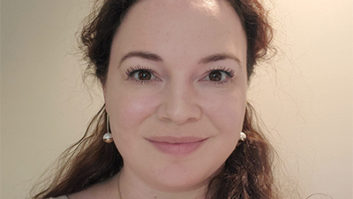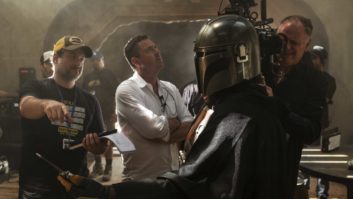In December 2017 Imagine Communications announced the appointment of Tom Cotney as new CEO. After a quiet first few months, Cotney surprised the industry somewhat at NAB when he announced plans to split Imagine into two business units: one focusing on playout and networking solutions, the other on advertising technology.
Looking back over his first nine months in the broadcast technology sector, Cotney says he’s found his introduction to the market extremely exciting: “I’ve been in enterprise IT and Telecoms, those are important industries, but their products are not as relatable as the media’s products. In this industry, we’re also consumers of the end result. So I knew this would be more exciting,” he tells TVBEurope.
“I knew there are parallels between those worlds and where I am now and that’s proven to be true. What I mean by that is technological evolution, so going from the traditional baseband products to the IP-based products is not easy. What I didn’t know is how gregarious and open customers are and how willing they are to teach you their business. I’ve found that to be a really pleasant surprise, that’s a little different than what I’m used to where people traditionally kind of play their cards close to their chest.”
IP is a major factor in Cotney’s vision for the future of Imagine Communications. But he’s also very aware that not everyone in the industry is excited about the change in technology as others: “I’ve learned that people really are looking at the change in technology in different ways,” he explains.
“Media companies approach that from a viewpoint of not what is available from a technological point of view but from the point of view of how ready they are.”
Cotney says there are currently two kinds of customers, those that are the early IP adopters and those that are thinking about that migration differently, who want to buy into the new technology further down the maturity curve. “We are in something of a tumultuous time,” he says. “A lot of broadcasters are merging and consolidating and they are watching to see which vendors are going to survive as well. IP adoption is not going to happen just because the technology is ready and because of that we are sort of adapting the way we do business.”
“If we don’t evolve how do we stay in business? It could limit our revenue if we’re only selling to the early adopters. We’ve got to monetise the wait. In other words, we have to figure out how to make a living by serving those customers.”
Which brings us to the split into two business units. How has the company, and the market, reacted to that decision? “The one thing the division helped me realise was that we were under invested in leadership on the ad tech side,” admits Cotney. “We know the workflows, we know the business, but we needed to be more efficient and make better decisions from a delivery point of view. The new leadership team really has given us a better vision about how to provide that kind of support for customers.
“The other thing the split into two business units has helped us do is really clarify the return on investment for our owners,” he continues. “It’s well documented that there is a lot of change going on in the tech side of the media industry. That change is presenting opportunity more often than not. With the separation and with new leaders, we’ve been able to articulate that to our owners. It’s helping us to update our business plan and kind of raise our expectations for how big that business can be and how much of a contributor it can be on the client side.”
Being a broadcast technology newcomer means Cotney is about to experience IBC for the first time. How’s he feeling about the annual trip to Amsterdam? “I think I’m the most excited about road testing some ideas that we have. We talked about how people are going to migrate to new technology at different rates. We like to think we’re leaders in that category, we’re doing really well. We have more experience with IP than anybody in the market.”
Cotney says Imagine has come up with a plan that features some advisory services for customers that aren’t ready to migrate to IP. However, they won’t be ready to announce the specifics at IBC. “But we think the one common denominator between early adopters that are ready to go ahead and implement IP, and the ones that aren’t, is that they have cost questions,” he explains.
“So we’re trying to reshape our product offerings to compete not with all of the other product sellers, we’ve decided that what we’re going to compete with is our customers’ total cost of ownership. In the IP space where we’re virtualising infrastructure, instead of having dozens of little rooms at the BBC where you’ve got two people in 20 rooms monitoring 15 screens, they can go to a much smaller physical footprint, virtualise those screens and have a lot less people working 24/7 monitoring their operations. That is a dramatic reduction in their total cost of ownership.”
“What do you do for the person that’s not ready for the cutting edge?” ponders Cotney. “We have three new services that we’re going to be road testing at IBC with clients to sort of get them into a beta-phase. That’s what I’m looking forward to and I’m not trying to be coy but we are still learning. We think we’ve got three pretty solid advisory services to offer but before we go too public I think we just need to go through the customer validation period.”
Looks like the plan’s already in place for IBC2019.







